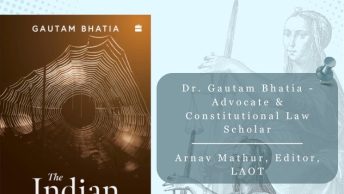Stay on Mandal II : A Way Out
With the Supreme Court’s Pasayat-Panta Bench refusing to vacate the stay on the applicability of the CEI(RA)Act to the OBCs this academic year, there is now a dire need to look at possible options for the Government. The Bench’s observation that the nation has waited for 57 years, and it can afford to wait for six more months (till the case is finally heard, although in effect it would mean losing a full year) may be viewed as totally unnecessary and even unjustified, and insensitive to the OBCs, with full of aspirations. The political class is unlikely to accept this refusal, and most likely explore the possible options to overcome this setback. Whatever the merits of the Bench’s decision, (the Bench has not gone into the merits of not staying the Act at all), we have to accept it as given, and look at the alternatives before the Government dispassionately. Letting the OBCs lose a year is certainly not a wise and sensible option.
The interim order (the Bench calls it final order insofar as the move to deprive the OBCs the benefits this academic year) indicated two hurdles before the Act could be approved: the validity of data and the exclusion of creamy layer. In today’s hearing, surprisingly, the Bench appeared to have agreed with the Solicitor General that Indra Sawhney Bench had approved the 27 per cent reservations for the OBCs, and therefore, the question on data for a similar quota for admissions in CEIs does not make sense. But the Bench immediately linked this issue with that of creamy layer exclusion, and asked the SG that the Government has not excluded it, even though Indra Sawhney made it mandatory. It appears to be reasonably clear that it is the creamy layer exclusion that is bothering the Bench, rather than the absence of a fresh survey to identify the OBCs for the purposes of the Act. It is in this context, the Bench observed that the Government wanted to play the game first, and frame the rules (regarding creamy layer) later. But the Bench did not admit that the creamy layer exclusion rules are already available, but the Government had taken a deliberate stand to include creamy layer, in view of the peculiar problems facing the OBC students seeking admission in CEIs. This has been explained at length twice – in the counter affidavits of the Government and in the application to vacate the stay. But the Bench has chosen to ignore the Government’s arguments for the present, rather than give it due consideration.
Now, is there a way out? The Government, it appears, can certainly work on this option, and build all-party consensus, with the next Parliament session beginning on April 26. The power of the legislature to validate matters which have been found by judgments or orders of competent courts and Tribunals to be invalid or illegal is a well-known pattern. The legislature validates acts and things done by which the basis of Judgments or orders of competent courts and Tribunal is changed and the judgments and orders are made ineffective.
The effect of validation is to change the law so as to alter the basis of any judgment, which might have been given on the basis of old law and thus make the judgment ineffective. A formal declaration that the judgment rendered under the old Act is void, is not necessary. If the matter is pending in appeal, the appellate court has to give effect to the altered law and reverse the judgment. The rendering of a judgment ineffective by changing its basis by legislative enactment is not an encroachment on judicial power but a legislation within the competence of the Legislature rendering the basis of the judgment non est. The strategy is to cure the defects in the old law so as to make the new law consistent with Judicial expectations.
Therefore, political parties must use the next session of Parliament to do two things: one, bring an amendment Bill, to delete the references to OBCs in S.6 of the CEI(RA) Act, 2006; second, bring another Bill to reserve 27 per cent seats in CEIs for the OBCs, with a specific provision saying that the creamy layer among the OBCs to get the quota benefit, only if the 27 per cent seats remained unfilled by non-creamy layer among the OBCs – a proposal originally put forward by the CPI(M), but opposed by other parties. Alternatively, the Government can bring a single amendment Bill, to introduce these changes in the existing Act, and ask the CEIs to await the passage of the Amendment Bill, its assent by the President, and the Gazette Notification of the Amendment Act coming into force.
To make it further fool-proof, the new Bill could also make it clear in the definition clause, that the OBCs are “as already determined and approved by the Supreme Court in the Indra Sawhney judgment” and as mentioned in the Central List for the public services, to be considered for purposes of the Bill. The National Commission for Backward Classes could be mandated by the Act to carry out a special sample survey, to be completed within a year, to verify the continuing eligibility of the various castes and communities in the Central OBC list, and to recommend inclusion and exclusion, on the basis of complaints on a transparent basis.
This must take care of the Court’s interim concerns, till it is finally heard in August. The CEIs must be directed to keep the 27 per cent seats open, till the enactment of the new statute, within a fortnight, as the promulgation of ordinance during a Parliament’s session for this purpose may not be proper.
Update: The Chief Justice of India, the reports suggest, has accepted the GOI’s plea for early hearing of the case, and has advanced it from August to May 8. But early hearing alone –whether by this Division Bench or by a Constitution Bench – will not help to satisfy the political class, and withstand the pressures of the academic calendar staring at the face of the OBCs. The Judiciary –whatever the outcome of the case – appears to be concerned more about the form rather than the substance of the compensatory discrimination policy. For the sake of preserving the substance under threat from this case, it may be in the interest of the OBCs, to finetune the form of the policy, and opt for certain face-savers as suggested here, in order to appear to be fair and just, even though the Government and the political class might be convinced about the merits of the substantive policy it is pursuing.






Your suggestion is like a cure that is worse than the disease.
For how long the admissions should be delayed.What will happen if the(se) Act(s) are challenged in the court and court grants a stay.And wont such a move to defeat the very purpose of the stay amount to
contempt of court. It is not just a question of an order by two judges, it is also a question of
legitimacy and credibility of
institutions. If each state
chooses this option to overcome
hurdles created by the high courts’
orders and judgments where will it
end.We can as well abolish all courts and allow MLAs,MPs to be judges also.
The govt. bungled by being adamant on the creamy layer issue.On one hand the govt.wants to use Mandal
judgment but refuses to accept that
part of the judgment which makes exclusion creamy layer as a mandatory requirement.
Even the Veerappa Moliy Panel’s report has data that would expose the hallowness of the government’s
claim on creamy layer.It is better to use the time till August to prepare arguments and collect data that would answer the questions raised by the court.
“But the Bench did not admit that the creamy layer exclusion rules are already available, but the Government had taken a deliberate stand to include creamy layer, in view of the peculiar problems facing the OBC students seeking admission in CEIs.”
I dont understand what these ‘peculiar problems’ are.
Are there no OBC students in IITs,IIMs and in AIIMS.
Are you arguing that they face some
problems like discrimination or bias in selection.
Dear Mr.Ravi Srinivas,
Thanks for the intervention.
As I explained in the beginning of the post, changing the basis of the judgments through fresh legislative initiative/amendment is not unprecedented or unusual. It has happened many times, and cannot be construed as contempt of court. I agree that the creamy layer issue is a problematic one. To many, there appears to be an inherent inconsistency if a government wants to go by the Central list of OBCs, approved by the Indra Sawhney Judgment for the purpose of Art.15(5), but also genuinely believes that the I.S.Judgment’s ruling on creamy layer is applicable only to A.16(4)(backward classes as opposed to SEBCs). I agree this apparent inconsistency needs to be explained more convincingly by the Government than what it has done so far. Can you cite which part of Moily report’s data challenge the Govt.’s claim on creamy layer?
The creamy layer issue is not just a ‘problematic’ issue in this case. To my mind, it is THE issue which is pulling the rug out of the GoI’s arguments. Mr.Venkatesan would like us to believe that there are credible reasons for the inclusion of SAPs/sections and the problem is just an inabliity of the GoI to ‘explain’. The fact is there are NO credible explanations whatsoever that has come out so far in the debate. CPM’s suggestion atleast acknowledges the reality to consider SAPs/sections. However other parties are dogmatic. This directly contravenes the sense of natural justice behind the policy of reservations.
Dear Mr.Srinivas,
The peculiar problems in excluding creamy layer have been dealt with at length in the application, for which I have provided a link in my earlier post on April 18.
What I consider as insufficient explanation by the Government is on the inconsistency that can be inferred from relying on the Indra Sawhney judgment for the correctness of the OBC list, while at the same time not excluding the creamy layer as required by the IS Bench for the purpose of A.16(4). In my view, this inconsistency is justified, and could have been explained better by the Government to the Court. The sad part is that the Court harped on this inconsistency, while not focussing on the reasons advanced by the Government for not excluding the creamy layer.